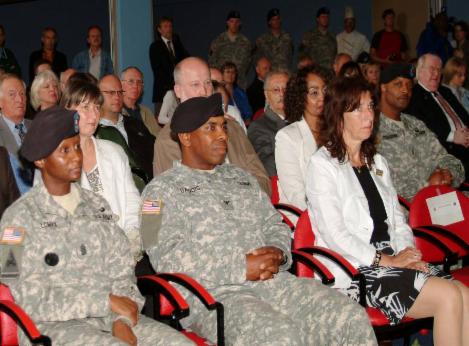Post Closure
A final retreat
_______________________________
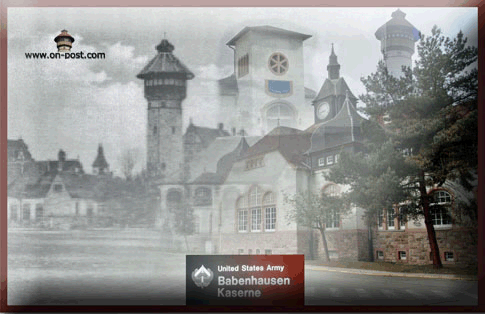
__________________________________
 After 60 years, U.S. hands over Babenhausen By Kevin Dougherty, Stars and Stripes European edition, Saturday, June 30, 2007 BABENHAUSEN, Germany — Hundreds of keys marked with color-coded tags hung in a box near a desk where a series of documents were neatly arranged. It was around 11 a.m. Friday and Sylvia Bechtel-Schneider was methodically working her way through the stack, carefully setting out sheets of paper for her boss and a German official to sign. Fifteen minutes later, after the last pen stroke, Babenhausen Casern — a U.S. Army facility for more than 60 years — had been successfully returned to the German government. “It is done,” Quentin Walsh, chief of the Mannheim real estate office, said to a handful of people who witnessed the transfer from the last occupied office on post. Located about 20 miles southeast of Frankfurt, the U.S. military community had been home to 4,500 Americans as recently as 2003, said Nola Maloney, the sub community manager for the past two years. By the time Maloney arrived, there were half that many, and soon afterward the Headquarters and Headquarters Battery, 41st Field Artillery Brigade inactivated. That departure was followed by more departures and soon Babenhausen landed on a base closure list. The last family left in late January; the last soldier bid the place adieu in March. “The face of our presence [in Europe] is changing,” Walsh said shortly before the signing ceremony. Built more than a century ago, Babenhausen Casern actually was occupied by French forces following World War I. The German army established a hospital on the premises during World War II, and, afterward, it was used by the U.S. Army as a cantonment camp for German soldiers. For a time, it also served as a United Nations refugee camp. Babenhausen became a regular U.S. Army post in the early 1950s. The first artillery unit to move in was the 36th Field Artillery Group headquarters. In recent years, some of the principal tenants were the 41st Field Artillery Brigade; the 1st Battalion, 27th Field Artillery Regiment; and the 77th Maintenance Company. Additionally, there were air defense artillery batteries on post. “There’s a lot of history here from the U.S. side,” said Gary McGowan of the directorate of public works in nearby Darmstadt. “As we go, the community definitely feels the loss.” Last year, the mayor of Babenhausen, Reinhard Rupprecht, estimated that Americans annually pumped about $500,000 into the local economy. While the casern, which covers nearly 400 acres, now becomes the property of the federal government, Rupprecht said long-term plans for the area would probably include a mix of housing and light industry. The estimated value of the residual improvements to the property over the years is about $80 million, Bechtel-Schneider said. However, the figure will likely drop when German and American negotiators sit down to haggle over the final amount. Whatever the figure, it is doubtful Bechtel-Schneider missed anything, given her staff’s thorough inspection. “We crawled through every building,” she said, “from the roof to the basement.” 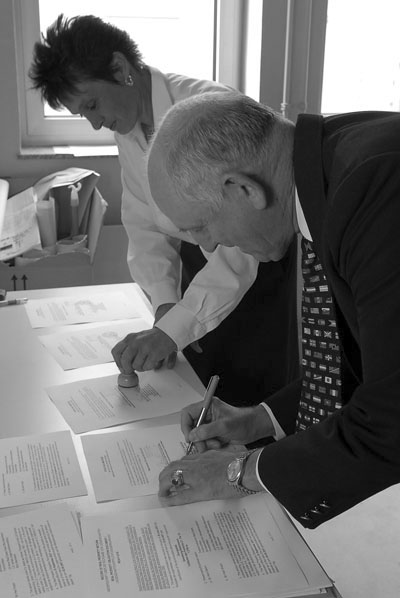 Michael Abrams / S&S Quentin
Walsh, right, signs contracts returning Babenhausen Kaserne and housing
area back to the German government on Friday as Sylvia
Bechtel-Schneider stamps them. Both are with the Installation Management
Command real estate office. 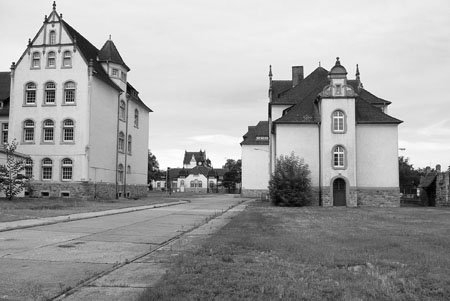 Michael Abrams / S&S Some of the historic old buildings on Babenhausen Kaserne. The former American army base was returned to the German federal government on Friday. Used with permission from Stars and Stripes. ©2007,2013 Stars and Stripes |
_________________________________________________
AFN News
® AFN
Europe/ Ken James Reporting
____________________________________________________________________
A final retreat
The Closing Ceremony
July 9 2007
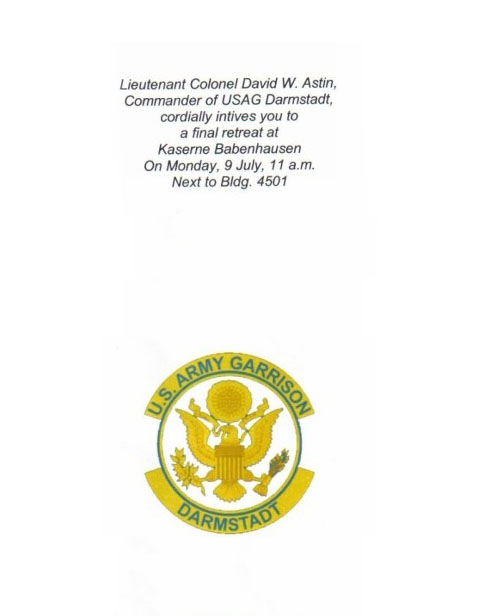
The formal Invetation for the final retreat

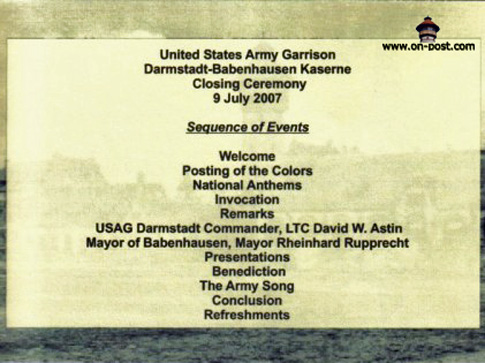
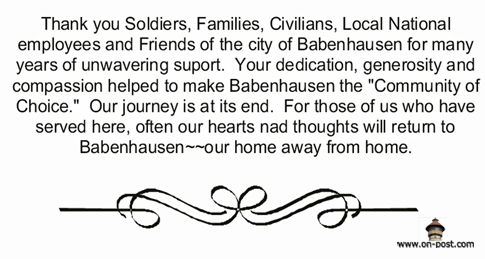

_____________________________________
All photos © HSB & Brigitte O'Preska
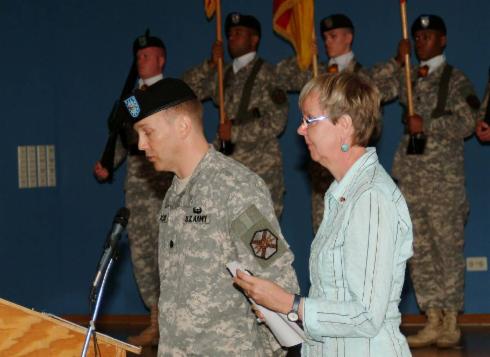
To his right, Public Affairs Specialist
Brigitte O'Preska
The Kaserne was more then buildings, walls and gates, there were several events that both sides shared with each other, such as Thanksgiving, the Christmas tree lightings, the German - American Volksfest and the many Fasching seasons, just to name a few.
The terrorist attacks of 9/11 showed that we have friends here in Babenhausen and we will not forget
them.
Reinhard Rupprecht, Mayor of Babenhausen addresses the audience.
In his speech Rupprecht said:
“Now we have to say goodbye to dear friends who have been part of the city’s destiny for over six decades, but also to the more than 100-year-old tradition of being a garrison town. Babenhausen is now facing the biggest challenge of its recent history.”
were honored for their longtime
service to the military community

is also honored for his longtime service
to the military community.

base operations manager, for U.S. Army
garrison Darmstadt & Babenhausen.
the last flag that flew on post, from Lieutenant Colonel Astin.
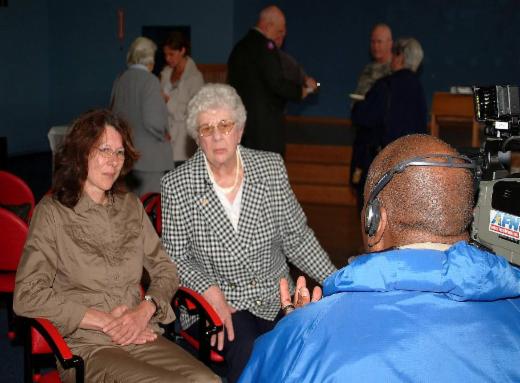
Mrs. Fischer is interviewed by AFN News
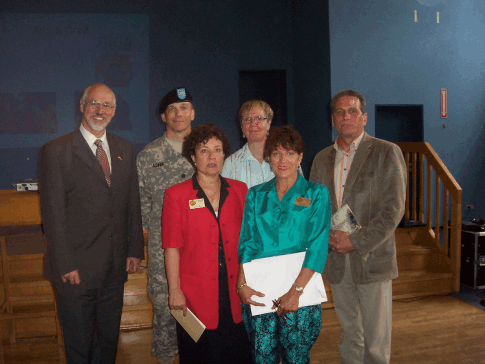
Rolf Kreisel (Public Affairs),Teri Viedt and Nola Maloney (233rd BSB) after the ceremoney
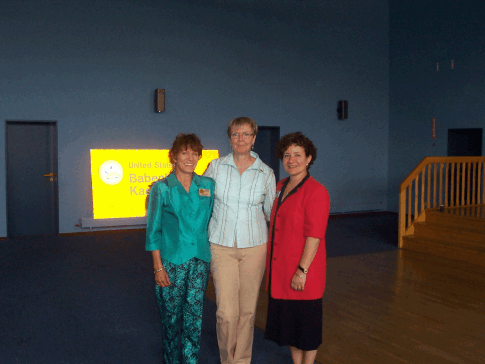
and Teri Viedt
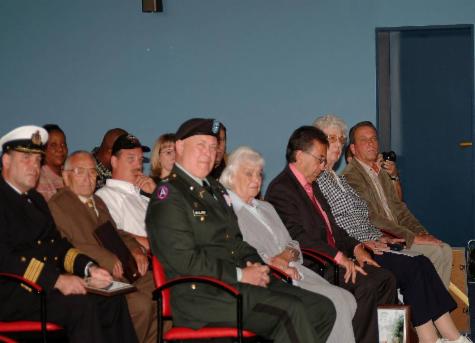
Honored guests,
Colonel Bernd Willand (center),
a German born native of Babenhausen.
100 guests looked on as the U.S. handed
over Babenhausen Kaserne to Germany.
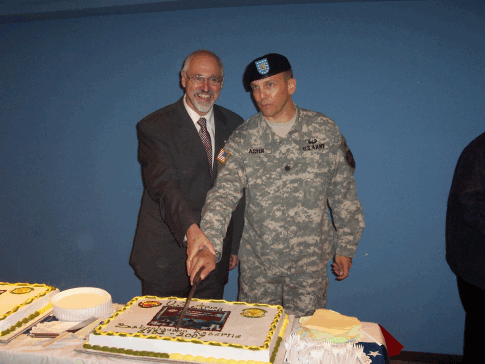
Mayor Rupprecht and Lieutenant Colonel Astin
cutting the ceremony cake.

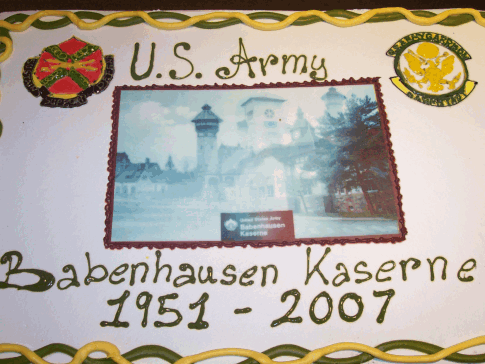
The final task
All photos © 233rd BSB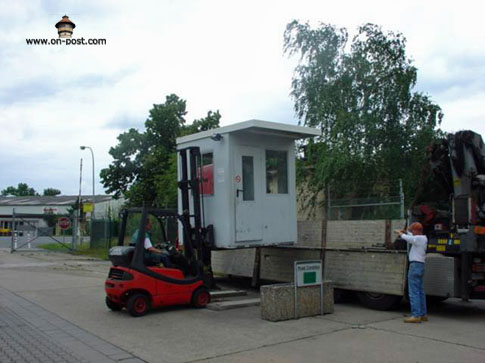
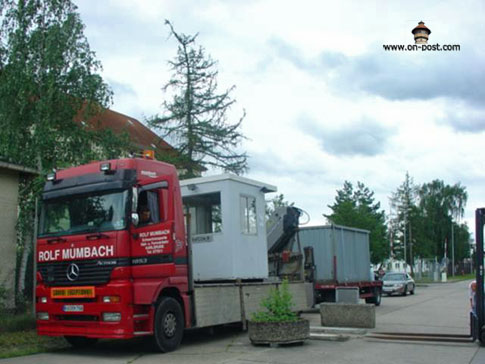
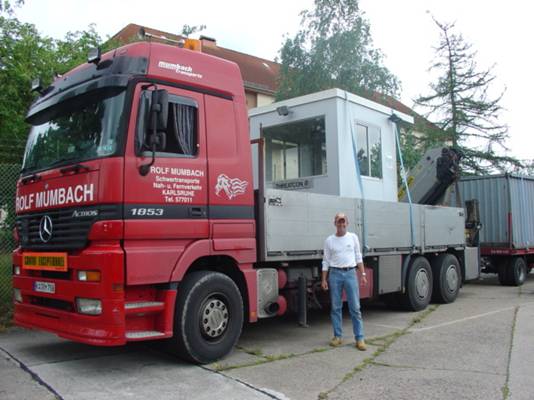
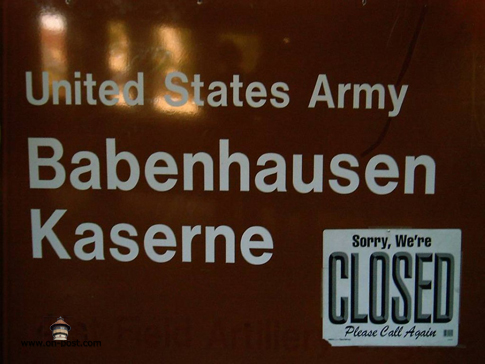
_____________________________________________________________________________________________________________________
Graphics,
Articles and photos on this web site are posted by permission of their
owners and are for viewing only. They are not for general distribution,
nor for use on other websites, unless permitted by the web master or the
original owner. If you find any files on this site that you believe are
unauthorized, please contact the web master immediately so that the
issue can be resolved.
___________________________________________________
